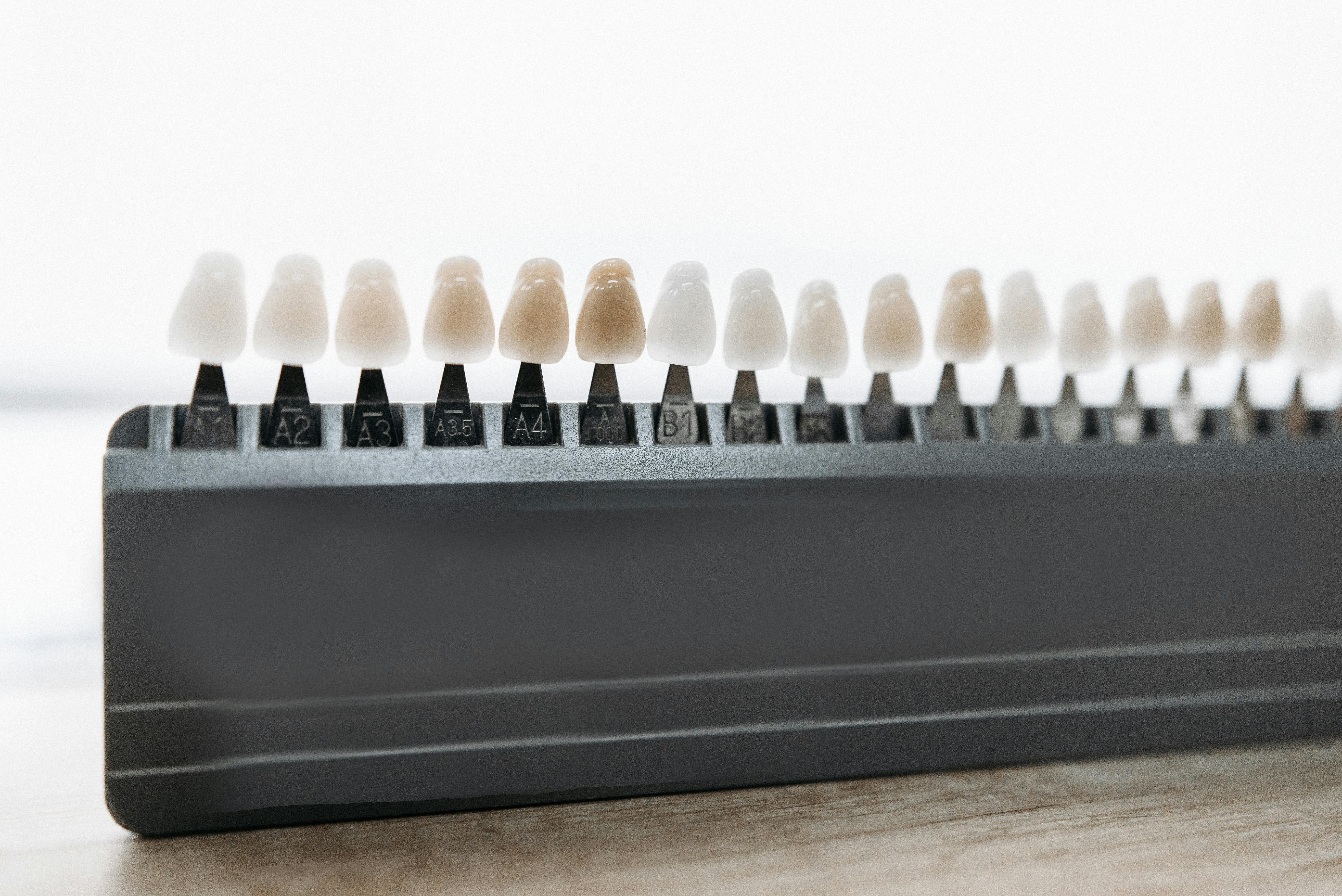Veneers are a popular cosmetic dental procedure used to improve the appearance of teeth. They are thin porcelain shells that are bonded to the surface of teeth to correct issues such as chips, discoloration, misalignment, and gaps. But when it comes to placing veneers, one question many people have is “how many teeth do you put veneers on?” The answer depends on the individual situation and goals of the patient. In this article, we’ll explore the various factors that will determine how many teeth receive veneers and what other options may be available.It depends on the individual situation, but usually between four and eight teeth can be veneered.
Number of Teeth to Veneer
When it comes to choosing the number of teeth to veneer, there are several factors that must be taken into consideration. The most important factor is the health and condition of your teeth. If you have any existing dental issues such as decay, gum disease or cracked teeth, these should be addressed before considering veneers. If you have healthy teeth, then you can consider having a full set of veneers or just a few individual ones.
Another factor to consider when selecting the number of teeth to veneer is the size and shape of your smile. If your teeth are small or misshapen, then it may be necessary to choose more than one tooth for veneering in order to achieve a more uniform look. Additionally, if the gaps between your teeth are too large for conventional veneers, then multiple teeth may need to be covered in order for them to fit correctly.
Finally, the cost is also an important factor when deciding on the number of teeth to veneer. Generally speaking, it is more affordable to cover fewer teeth with veneers rather than multiple ones. However, depending on the type and quality of materials used for the veneers, as well as other factors such as tooth preparation and placement time in the dental office, the overall cost may increase if more than one tooth requires treatment.
In conclusion, when selecting how many teeth should be covered with veneers there are several factors that must be taken into consideration including oral health condition, size and shape of your smile and cost. By taking all these factors into account you can make an informed decision about what is best for your oral care needs.
What Are the Benefits of Having Multiple Teeth Veneered?
Veneers are an increasingly popular cosmetic dental procedure. They are thin shells of porcelain or composite material that are attached to the front surfaces of teeth to improve their appearance. When multiple teeth require veneering, there are several benefits that patients can enjoy.
The most obvious benefit of having multiple teeth veneered is a more attractive smile. Veneers create a uniform look for your teeth and can hide any imperfections, such as chips, cracks, gaps, and discoloration. They can also be used to reduce the appearance of uneven or oddly shaped teeth.
Another benefit of having multiple teeth veneered is that the procedure is quick and minimally invasive. Veneers can be placed in just one or two visits to your dentist’s office and require no extensive preparation on the tooth itself. This makes them a great option for those who want to get a beautiful smile without undergoing more extensive treatments like braces or crowns.
Finally, veneers provide long-lasting results that will last for many years with proper care and maintenance. The porcelain used in veneers is strong and durable, and with proper oral hygiene, they can easily last up to 10 years or longer before needing replacement. This makes them a great option for those who want a permanent solution for their cosmetic dental needs.
Overall, having multiple teeth veneered offers many benefits that make it an attractive choice for those looking to improve their smile quickly and easily. With minimal invasiveness and long-lasting results, it is no wonder this procedure has become so popular in recent years!
How Many Teeth Can You Have Veneered at One Time?
Veneers are a great way to improve the aesthetic look of your teeth, and they can be used to correct a variety of issues. It’s important to understand how many teeth can be veneered at one time in order to make an informed decision about your treatment plan. Generally speaking, you can have up to eight teeth veneered at one time. However, this number can vary depending on the type of veneering procedure you’re having done and the condition of your teeth.
If you’re having porcelain veneers placed over existing teeth, it’s possible to have up to eight teeth veneered in a single appointment. However, if you’re having composite veneers or crowns placed over existing teeth, the number of teeth that can be treated at one time is usually fewer than eight. This is because these types of procedures require more preparation than porcelain veneers and therefore take longer to complete.
In addition, the number of teeth that can be treated at one time also depends on the condition of your existing teeth and whether any additional treatments are required before placing the veneers or crowns. If there are any underlying issues with your existing teeth that need to be addressed before placing the veneers or crowns, then it may not be possible to treat all of your affected teeth in a single appointment.
Your dentist will evaluate your oral health and discuss with you what type of treatment is best for you based on your individual needs and goals. They will then let you know how many teeth can be treated at one time and develop a plan for treatment that works for you.
What Are the Risks Associated with Veneering Multiple Teeth?
Veneers are often used to improve the appearance of multiple teeth, but there are a few risks associated with this procedure. One of the main risks is that if the veneers are not properly placed, there is a chance that they could cause further damage to your teeth. Additionally, there is a risk of infection or decay if the veneer does not fit correctly or if it is not sealed properly. Patients should also be aware that veneers may become discolored over time due to staining from food and drinks, and they may need to be replaced more frequently than natural teeth. Lastly, due to the cost and time involved in placing multiple veneers, it is important for patients to weigh their options carefully before committing to this type of procedure.
It’s also important for patients to be aware of any pre-existing conditions they may have that could affect their ability to undergo this procedure safely. Additionally, patients should ensure that they are getting veneers placed by a qualified professional who has experience with this type of cosmetic dental work. Proper aftercare instructions should also be followed in order to ensure the success of the veneering process and reduce any potential risks.

Multiple Tooth Veneers
Completing multiple tooth veneers typically takes longer than completing a single veneer. This is because the dentist must take extra care when creating each veneer to ensure they are uniform in size, shape, and colour. The dentist must also ensure that the veneers fit properly and match the patient’s existing teeth. As such, multiple tooth veneers require more time and attention to detail than single tooth veneers.
In addition, multiple tooth veneers may require more than one dental visit to complete. Depending on the number of teeth being treated, the dentist may need to make several molds of the patient’s teeth to create the perfect fit for each individual veneer. This process can be quite time consuming and may require additional visits for fitting and adjustments if necessary.
It is important to note that multiple tooth veneers typically take longer than a single tooth veneer because they must be crafted with precision in order to give the patient a natural-looking smile. Since this process requires more time and effort, it is important for patients considering this treatment option to discuss their timeline and expectations with their dentist before beginning treatment.
What Should I Expect from a Multiple Teeth Veneering Procedure?
A multiple teeth veneering procedure is a dental treatment that involves the use of porcelain veneers to improve the appearance of your smile. Veneers are thin shells of tooth-colored material that are applied to the front surfaces of your teeth. The procedure is usually used to fix minor issues such as chipped or discolored teeth or to correct the size or shape of your teeth. During the multiple teeth veneering procedure, your dentist will take impressions of your mouth and then use them to create custom-made veneers that fit perfectly on your teeth.
When you arrive for the procedure, you’ll be given local anesthesia to numb any discomfort during treatment. Your dentist will then prepare your teeth by lightly etching them with an abrasive material and taking impressions for fabrication. Once this step is complete, they will bond the porcelain veneers to each individual tooth using a strong adhesive. The process takes about two hours per arch and can be completed in one appointment.
Once all of the veneers have been placed, you’ll need to follow up with routine checkups and professional cleanings every six months. Your dentist may also recommend special care instructions such as avoiding certain foods and drinks that may stain or damage your new veneers. With proper care and regular maintenance, you can expect your multiple teeth veneering results to last for many years.
What Is the Cost of Having Multiple Teeth Veneered?
The cost of having multiple teeth veneered depends on several factors, including the type and number of veneers required, as well as the experience and location of the dentist performing the procedure. Generally speaking, a single veneer may cost anywhere from $500 to $1,700 per tooth. If multiple teeth need to be veneered, then the cost can range from $1,000 to $4,000 for a full set of upper or lower teeth.
The price may also vary depending on the type of material used for the veneers. Porcelain veneers are generally more expensive than composite resin ones because they last longer and create a more natural look. Additionally, porcelain is more durable and stain-resistant than resin.
The cost can also change depending on whether or not your dentist charges for additional services such as X-rays or impressions. In some cases, your insurance may cover part or all of the cost of having your teeth veneered; however, it is important to check with your insurance provider before beginning any dental procedures.
Overall, having multiple teeth veneered can be an expensive procedure; however, it is important to remember that this investment can help you achieve a healthier and more attractive smile that will last for many years.

Conclusion
The number of teeth you put veneers on depends on the patient’s individual needs and goals for their smile. Although most people opt for 8-10 teeth to be veneered, some may need more or fewer depending on their unique situation. Ultimately, the best way to determine how many teeth should be veneered is to speak with a cosmetic dentist about your smile goals. Your dentist can provide you with advice and options that are tailored to you and your needs.
No matter how many teeth you decide to veneer, it is important to note that proper care and maintenance are essential for lasting results. Taking the time necessary to clean and care for your veneers can help ensure they stay in great condition for years to come.
By taking into consideration both your cosmetic desires and dental health needs, you can work with your dentist to create a truly beautiful smile!
